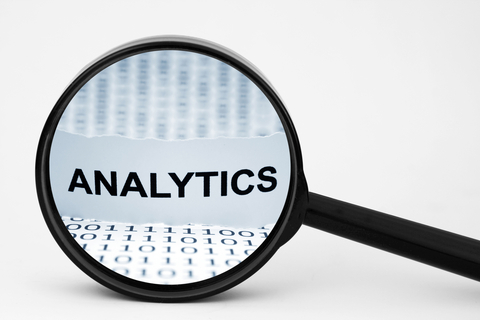In-store customer journey analytics is a tricky game to win.
It’s an immature and rapidly evolving discipline with gaps and issues at almost every step – from collection technology to reporting standardization to analytics methodology. And, of course, its integration into the broader store promotion, marketing and operation functions is very much a matter of trial and error. In a bleeding-edge environment, knowing what to focus on and where the biggest potential pitfalls lie is half the battle.
To help you focus on the really important stuff, here’s four winning ways to help you craft a successful in-store customer journey strategy and an analytics environment that can support the needs of your organization.
Play 1: Every Store is Different – You Need to Localize
In retail, local conditions are critical. If you’re trying to optimize a chain of 300 stores by measuring a single “sample” store, you’re never going to be able to factor in local conditions and you’ll drive the wrong actions far too often.
The need to localize measurement down to (at least) store footprint and region means that most chains should count on wiring up 10 to 20 different stores. In addition, you’ll probably need to measure two similar stores in every category so that you can effectively run A/B tests.
Getting a quorum of stores that provides enough diversity in measurement is a key part of a good proof-of-concept and part of building the right foundation to make in-store tracking effective. This approach also puts a premium on infrastructure and rollout cost. If the costs are high to wire up a single, modest store, you’ll never be able to afford localization.
Play #2: Knowing “Where” Is Half the Battle
In retail analytics layout and dimensions are essential ingredients in successful execution.
The first and most important step in translating customer waypoint data into something useful is to map it against your store layout. This means moving off paper planograms and having an effective system for collecting, updating and checking on localized store layout data.
If you can’t effectively map customer locations to what was there in the store, you’ll never be able to effectively use the data for decision-making. Place a premium on the ability to visualize the data in the context of the store. The easier you make it to contextualize customer waypoint data to the store, the more data will be used.
Play #3: Accuracy To the Level of Decision is Critical
A failure to achieve sufficient accuracy will diminish results. Look for how to achieve the most accurate answers in these key areas:
- Comprehensive Customer Counting: Comprehensiveness depends on the ability to cope with environmental stress like crowds or kids playing inrevolving doors. Know your restrictions. For example, Wi-Fi tracking alone will only work on populations that have Wi-Fi enabled phones. If you’re counting customers based on that technology, you need to understand that restriction.
- Over-Time Customer Visitation: The ability to track individuals over time is valuable for both segmentation and success measurement. For cameras, facial recognition against an over-time population is much harder than against the in-store population. For passive Wi-Fi, the use of random addresses can make over-time tracking nearly impossible. For connected Wi-Fi, you’re at the mercy of a customer’s variable opt-inbehavior.
- Tracking Path through the Store: Accuracy in tracking a single visit is mostly a problem for camera-based systems that have to connect a customer across zones. An 80 percent accuracy rate from one zone to the next may sound okay, but will quickly result in a very inaccurate journeymap when a customer crosses many zones, as they will.
- Locating the Customer: The ability to fix a customer’s location in the store is especially hard for passive Wi-Fi. If your positional accuracy is only good to three or four meters, you’re talking about a big circle of error, which could conceivably cross aisles or sections. Placing a customer in the wrong section creates bad decisions and erroneous actions.In most cases, you’ll want accuracy in the two-meter range to do quality analysis.
Play #4: Use all of your Data to Find Insights that Drive Action
In-store journey analytics begins with customer movement data from technologies like camera and Wi-Fi. But if you only use that data, you can’t answer critical questions around the store funnel, the impact of staff interactions and broader store performance.
Waypoint data, store mapping, point-of-sale data, and staff interaction data are all core to in-store experience measurement. And don’t forget sources like staffing data, inventory, weather, outside traffic, and promotion data.
More data gives you deeper insights and adds the proper context to drive the right actions. Looking further back into history can find more patterns or offer increased validation of discovered patterns. Adding more sources helps identify additional patterns, new attributes, or added influences on behavior.
In-store tracking data, combined with additional sources such as transactions, loyalty programs and customer demographics, will help you get a 360-degree view of in-store operations and merchandising, and the impact on sales. Identifying discrete patterns buried deep within this voluminous, complex and cryptic data will yield the best insights.
Make the Right Call
Tackling a new measurement technology is never easy. For retailers beset by digital challenges and dramatic shifts in the way people choose to shop, change is inevitable. Put this game plan to work and win on the in-store analytics front.
About the Authors
 John Morrell is Sr. Director of Product Marketing at Datameer.
John Morrell is Sr. Director of Product Marketing at Datameer.
 Gary Angel is CEO and Founder, Digital Mortar. Widely considered one of the leading digital measurement experts in the world, Gary recently launched a new venture focusing on digital analytics tracking and strategies in the physical retail space. He previously led EY’s Digital Analytics Practice from 2013-2016. EY acquired Gary’s previous company – Semphonic – in March of 2013. Gary writes an influential blog, has published more than twenty whitepapers on advanced digital analytics practice and is a frequent speaker at industry events.
Gary Angel is CEO and Founder, Digital Mortar. Widely considered one of the leading digital measurement experts in the world, Gary recently launched a new venture focusing on digital analytics tracking and strategies in the physical retail space. He previously led EY’s Digital Analytics Practice from 2013-2016. EY acquired Gary’s previous company – Semphonic – in March of 2013. Gary writes an influential blog, has published more than twenty whitepapers on advanced digital analytics practice and is a frequent speaker at industry events.





Speak Your Mind